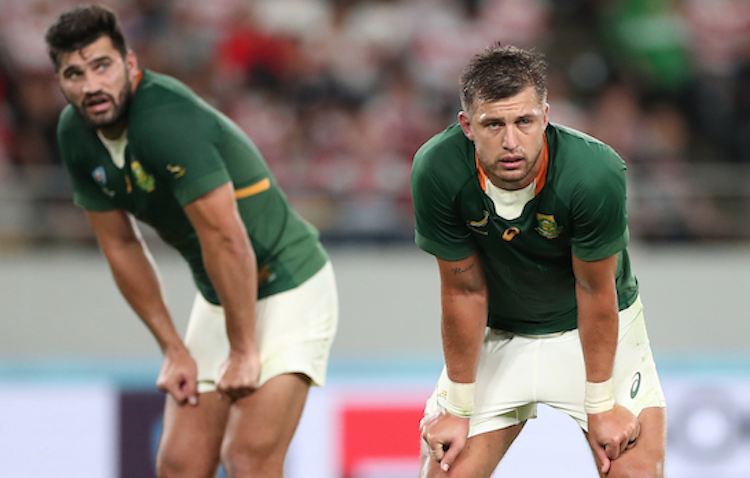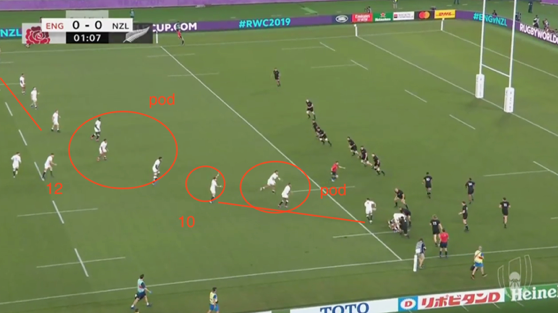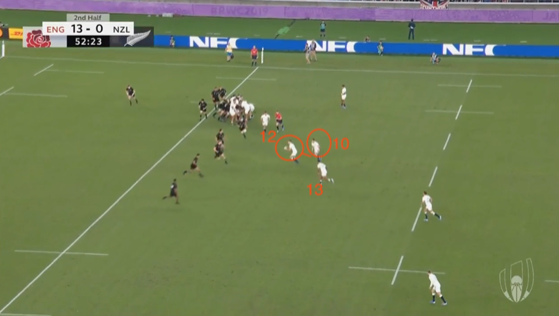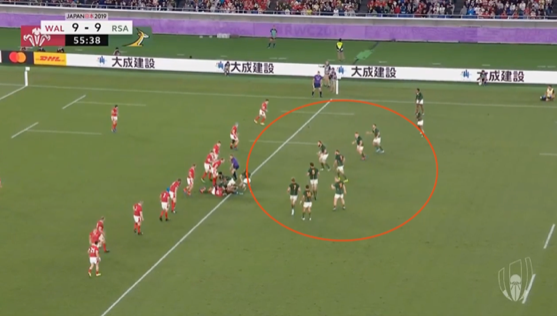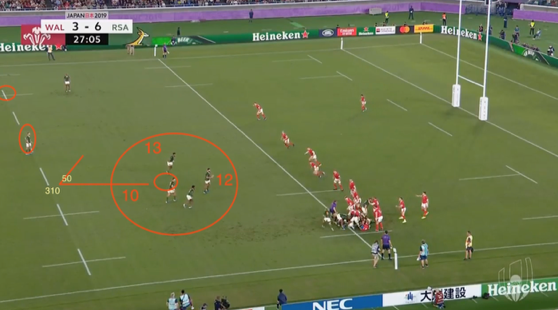For the Boks to emerge as World Cup winners, they need to make small attacking adjustments the English won’t expect in Saturday’s final, writes defence guru OMAR MOUNEIMNE.
Let’s get straight to it.
England and South Africa have a lot in common. Both teams were at a low when their coaches took over, both teams needed results and hail from proud rugby nations. Now both teams are in the final. Both coaches are brilliant at rebuilding and know how to get teams winning.
England made an early exit from their own World Cup in 2015 and have hit some serious lows in all facets of their game. In Rassie’s case the Boks were dropping rankings quicker than Superman swoops out of the sky when he took over.
Incredibly, the two sides have won trophies and achieved incredible coaching milestones along the way, so they truly have a lot in common. But there is something they don’t share that could be the difference on Saturday. Let’s have a look.
Both play a suffocate-and-strangle game based on the holy trinity of a rugby rebuild: conditioning, defence and set piece. All with the assistance of defence’s dark cousin – the kicking game.
So England and the Boks have massive linespeed defence that makes monstrous shots (tackles) and terrorises you at the breakdown. Both teams have strong set pieces that hurt opposition and sap their energy, while forcing field position with penalties.
Finally, both have a kicking game that forces errors and keeps you playing off the touchlines, while the lightning-speed defence tees you up from the trams and beats you up, or forces an error in the air and gives them set-piece and turnover-attack opportunities in the opposition half.
So, although they have so much in common, there is something they don’t: slick, fluid attack. This is where England have the edge.
Rasssie and Eddie both elected to rebuild their teams with the holy trinity. However, Eddie realised you can have a suffocating gameplan in addition to an electric attack with multiple ball players, multi-options at the gainline and great intensity. Coupled with a suffocation approach, that makes them the gold standard at the moment.
England’s strike moves are slick and well designed, and their default shape always has big ball-carriers at the line who can run over you and be ball-players/playmakers at the same time. They essentially have front-door and back-door play options with the ball in two hands on a lot of their plays.
Have a look at the picture below: prop Mako Vunipola is actually first receiver and playmaker off a lineout, with big ball-carriers and genuine playmakers like Owen Farrell and George Ford receiving the ball outside him. This creates panic for defences as you have to respect Mako at the line because he can run over you, or if you rush him he can make a play. It’s genius by Eddie. This is originally a Saracens move.
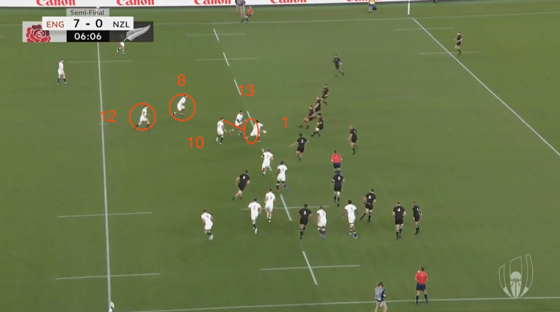
Then, from mauls, England suck you in and then use the width and their ball-players to take the coast as in the frame below. Again the defence has to respect the width and ball-playing ability of the attack. Farrell won’t just bash it up as a Damian de Allende might.
The Boks have taken a more conservative approach, which is effective, but like Ireland if you front up it can be negated. ‘Same way’ heavy ball-carriers are used to break you down until you give penalties for offside, or if you can’t fold quick enough because you’re overwhelmed with physicality. From there they get penalties and kick to touch and score tries.
The downside to this attack approach is that you don’t have a full-field threat and there are less decisions for the defenders to make, so the defence essentially just needs to fly up and man up.
After mauling, which has been effective for the Boks, they can often end up with their attack all on one side. See below for example.
For the Boks to beat England they would have to make make small attacking adjustments the English wouldn’t expect. See below the identical picture of De Allende receiving possession off a maul, as was the case with Farrell in the earlier example.
The difference is England are set to play a wide decoy play and De Allende is about to just take it up. Yet, he has the skill to use Lukhanyo Am and Handre Pollard to sit down the English defence and cut them wide. The Boks just need that mindset.
The difference in this final will come down to error rate and discipline, but finally the ability of the teams to create try-scoring options under pressure and execute.
I respect both these teams tremendously and both coaches are outstanding. England have an edge with their fluid and electric attack in my opinion, but either way, take a deep breath before Saturday.
As they say in the classics: Hier kom ‘n ding.
Photo: Steve Haag Sports via Hollywoodbets


